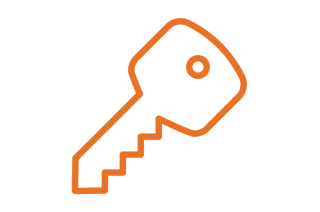Diabetes – what you need to know
Diabetes is a serious and complex condition which can affect the entire body. It requires daily self-care and if complications develop, it can have a significant impact on quality of life and can reduce life expectancy. While there is currently no cure, you can live an enjoyable life by learning about the condition and effectively managing it.
What is diabetes
When someone has diabetes, their body can’t maintain healthy levels of glucose in the blood. Glucose is a form of sugar which is the main source of energy for our bodies. Unhealthy levels of glucose in the blood can lead to short term and longer term health complications.
For our bodies to work properly we need to convert glucose (sugar) from food into energy. A hormone called insulin is essential for the conversion of glucose into energy. In people with diabetes, insulin is no longer produced or not produced in sufficient amounts by the body. When people with diabetes eat glucose, which is in foods such as breads, cereals, fruit and starchy vegetables, legumes, milk, yoghurt and sweets, it can’t be converted into energy.
Instead of being turned into energy the glucose stays in the blood, resulting in high blood glucose levels. After eating, the glucose is carried around your body in your blood. Your blood glucose level is called glycaemia. Blood glucose levels can be monitored and managed through self-care and treatment.
Three things you need to know:
- There are three main types of diabetes: type 1, type 2 and gestational
- All types of are complex and require daily care and management
- Diabetes does not discriminate, anyone can develop it.
It can be managed well, but is serious and the potential complications for type 1 and type 2 diabetes include heart attack, stroke, kidney disease, limb amputation, depression, anxiety and blindness.
Early diagnosis, optimal treatment and effective ongoing support and management reduce the risk of diabetes-related complications.
Genes also play a part with higher risk of type 2 in Chinese, South Asian, Indian, Pacific Islander and Aboriginal and Torres Strait Islander populations.
On the increase
Diabetes is on the increase and has become an epidemic of our times, one that is a big challenge confronting the Australian health system. All types are on the increase, however type 2 accounts for 85% of all diabetes and is increasing at the fastest rate. It is estimated that there are 2 million Australians who are at high risk of developing type 2 diabetes and are already showing early signs of the condition. Type 2 is one of the major consequences of the obesity epidemic. The combination of massive changes to diet and the food supply, combined with massive changes to physical activity with more sedentary work and less activity, means most populations are seeing more type 2 diabetes.
Some facts:
- 280 Australians develop diabetes every day. That’s one person every five minutes
- Around 1.8 million Australians have diabetes. This includes all types of diagnosed and silent, undiagnosed type 2, (1.2 million people are known and registered to have diabetes)
- More than 100,000 Australians have developed diabetes in the past year
- For every person diagnosed there is usually a family member or carer who also ‘lives with diabetes’ every day in a support role. This means that an estimated 2.4 million Australians are affected every day
- Total annual cost impact in Australia estimated at $14.6 billion.
What are the symptoms
Type 1 diabetes symptoms are often sudden and can be life-threatening. This means it is often diagnosed quite quickly. However, with type 2 diabetes, many people have no symptoms at all, while other signs can go unnoticed being seen as part of ‘getting older’. This means that by the time symptoms are noticed, complications may already be present.
Common symptoms include:
- Being thirstier than usual
- Passing more urine
- Feeling tired and lethargic
- Always feeling hungry
- Having cuts that heal slowly
- Itching, skin infections
- Blurred vision
- Unexplained weight loss (type 1)
- Gradually putting on weight (type 2)
- Mood swings
- Headaches
- Feeling dizzy
- Leg cramps
Prevention
Prevention measures vary between the three different types of diabetes.
Type 1 cannot currently be prevented. However, researchers are looking into the autoimmune process and environmental factors that lead people to developing type 1 to help prevent it in the future.
Strong international evidence shows diabetes prevention programs can help prevent type 2 in up to 58 per cent of cases. You can do a lot to reduce, delay and even prevent your risk of type 2 by:
- Maintaining a healthy weight
- Regular physical activity
- Making healthy food choices
- Managing blood pressure
- Managing cholesterol levels
- Not smoking.
Are you at risk?
Diabetes Australia has an online tool to assess your risk of developing type 2. The risk calculator will show your risk of developing type 2 in the next 5 years by asking you 11 questions. This is available here: www.diabetesaustralia.com.au/risk-calculator
There are state organisations that provide a range of programs and services for people at high risk.
Please Note: this information has been mainly sourced from diabetes Australia and other below listed sources, however the information is of a general nature only and should not be substituted for medical advice or used to alter medical therapy. It does not replace consultations with qualified healthcare professionals to meet your individual medical needs.
Interested in similar articles? Why not check these out:
Sources and more information is available at:











